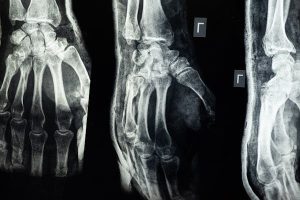Introduction
Injuries are a common aspect of life and can occur in various contexts, from everyday activities to specialized professional environments. Understanding the nature of injuries, their causes, treatments, and preventive measures is crucial for managing health and safety effectively. This comprehensive guide delves into different types of injuries, their causes, the available treatment options, and strategies for prevention.
Types of Injuries
Injuries can be broadly categorized based on their nature, cause, and severity. Understanding these categories helps in diagnosing, treating, and preventing injuries effectively.
Physical Injuries
Physical injuries refer to damage inflicted on the body due to external forces. These can range from minor cuts and bruises to severe fractures and organ damage.
Cuts and Abrasions
- Cuts: These are injuries that break the skin, often caused by sharp objects. They can vary from minor scratches to deep lacerations.
- Abrasions: These occur when the skin is scraped or rubbed away. They are generally less severe than cuts but can still lead to infection if not properly treated.
Sprains and Strains
- Sprains: Injuries to ligaments, the tissues connecting bones to each other, often caused by overstretching or tearing. Common sprains occur in the ankle, knee, or wrist.
- Strains: Injuries to muscles or tendons, which connect muscles to bones. Strains occur when muscles are stretched or torn due to overuse or sudden movements.
Fractures
- Open Fractures: These involve a broken bone that pierces the skin, increasing the risk of infection.
- Closed Fractures: These involve a broken bone that does not break the skin. They are typically less complicated than open fractures but still require medical attention.
Dislocations
Dislocations occur when bones are forced out of their normal positions in a joint. This can cause severe pain, swelling, and immobility. Commonly affected joints include the shoulder, knee, and finger joints.
Internal Injuries
Internal injuries involve damage to organs and tissues inside the body and are often more challenging to diagnose and treat than external injuries.
Physical Injuries
Physical injuries are the most common type and can be broadly categorized into acute and chronic injuries.
Acute Injuries
Acute injuries occur suddenly and are often the result of a specific incident.
- Fractures: These are breaks in bones that can range from hairline cracks to complete breaks. They usually require immobilization and sometimes surgery.
- Sprains and Strains: Sprains affect ligaments (the tissues connecting bones) and strains affect muscles or tendons. They often result from overstretching or sudden impacts.
Chronic Injuries
Chronic injuries develop over time due to repetitive stress or poor mechanics.
- Tendinitis: This is inflammation of a tendon, often caused by repetitive movements. Common in sports like tennis or baseball.
- Stress Fractures: Tiny cracks in bones caused by repeated stress, commonly seen in athletes and military recruits.
Psychological Injuries
 Psychological injuries can result from traumatic events or ongoing stress related to physical injuries.
Psychological injuries can result from traumatic events or ongoing stress related to physical injuries.
- Trauma: Severe emotional distress following an accident or injury can lead to conditions such as PTSD.
- Anxiety and Depression: Chronic injuries or long-term recovery can cause significant emotional strain, leading to anxiety and depression.
Common Causes of Injuries
Sports Injuries
Sports are a common source of injury due to high levels of physical activity and competition.
- Overuse: Repetitive stress on the body without adequate rest can lead to overuse injuries.
- Impact Injuries: Direct blows or collisions during sports can cause acute injuries like fractures or sprains.
Workplace Injuries
The workplace can also be a hotspot for various injuries.
- Slips and Falls: These are common in environments where floors are wet or uneven.
- Repetitive Strain: Jobs that require repetitive motions, like typing or assembly line work, can lead to conditions like carpal tunnel syndrome.
Accidental Injuries
Accidents happen unexpectedly and can occur anywhere.
- Car Accidents: High-impact collisions can lead to a range of injuries from minor cuts to severe trauma.
- Household Accidents: Falls, burns, and cuts are common in the home setting, often due to a lack of safety measures.
Preventing Injuries
General Safety Tips
- Proper Equipment: Using the right gear for sports, work, or home maintenance can prevent many injuries.
- Safety Protocols: Adhering to safety guidelines and protocols in various settings reduces the risk of accidents.
Specific Injury Prevention
- Sports: Engaging in proper warm-ups and cool-downs helps prepare the body for intense activity and reduces the risk of injury.
- Workplace: Making ergonomic adjustments and taking regular breaks can prevent repetitive strain injuries and accidents.
Treating Injuries
Immediate Care
- First Aid Basics: Knowing how to perform basic first aid, such as applying pressure to a wound or using the R.I.C.E. method (Rest, Ice, Compression, Elevation) for sprains, can provide initial relief.
- When to Seek Professional Help: If an injury is severe or does not improve with initial care, professional medical treatment is necessary.
Long-term Treatment
- Physical Therapy: Specialized exercises and treatments can help restore function and strength.
- Psychological Counseling: Therapy can assist with emotional recovery and coping strategies, especially for those dealing with trauma or chronic pain.
Rehabilitation and Recovery
Physical Rehabilitation
- Exercises and Therapies: Tailored rehabilitation programs, including physical therapy, are crucial for effective recovery.
- Importance of Rest: Adequate rest and gradual return to activity are essential to avoid re-injury.
Psychological Recovery
- Coping Strategies: Techniques such as mindfulness and stress management can aid in psychological healing.
- Support Systems: Support from family, friends, and mental health professionals can make a significant difference in recovery.
Impact of Injuries
On Daily Life
- Physical Limitations: Injuries can limit mobility and daily activities, affecting overall quality of life.
- Emotional Challenges: The psychological burden of an injury can be as significant as the physical aspects, leading to stress and emotional strain.
On Work and Productivity
- Absenteeism: Injuries often lead to time off work, which can affect productivity and job performance.
- Reduced Efficiency: Even when returning to work, employees may experience reduced efficiency due to pain or limited physical capability.

Innovations in Injury Prevention and Treatment
Technological Advances
- Wearable Tech: Innovations like smartwatches and fitness trackers can monitor physical activity and detect early signs of strain or overuse.
- New Therapies and Treatments: Advances in medical research continue to provide new methods for injury treatment and prevention.
Future Directions
- Research and Development: Ongoing research aims to improve injury prevention strategies and treatment options.
- Personalized Medicine: Tailoring treatment plans to individual needs and genetic profiles may enhance recovery outcomes.
Organ Damage
- Liver Injuries: Can occur due to trauma or disease, potentially leading to severe bleeding and complications.
- Kidney Injuries: May result from accidents or falls, impacting kidney function and requiring immediate medical intervention.
Concussions
Concussions are traumatic brain injuries caused by a blow to the head or body that shakes the brain within the skull. Symptoms can include headaches, dizziness, and cognitive impairments. Concussions require careful management to avoid further complications.
Emotional and Psychological Injuries
Injuries are not always physical. Emotional and psychological injuries can arise from traumatic events, accidents, or chronic stress.
Post-Traumatic Stress Disorder (PTSD)
PTSD is a mental health condition triggered by experiencing or witnessing traumatic events. Symptoms can include flashbacks, nightmares, and severe anxiety.
Depression and Anxiety
Depression and anxiety can result from chronic pain, long-term recovery processes, or traumatic experiences. These conditions require psychological support and, in some cases, medication.
Causes of Injuries
Injuries can result from various causes, ranging from accidents to repetitive stress. Understanding these causes helps in developing effective prevention strategies.
Accidents
Accidents are unexpected events that result in injury or damage. Common types of accidents include:
- Traffic Accidents: Car crashes, motorcycle accidents, and pedestrian incidents are leading causes of injury and death.
- Slip and Fall Accidents: Occur when individuals lose their balance and fall, often due to hazardous conditions like wet floors or uneven surfaces.
- Workplace Accidents: Include injuries resulting from machinery, falls, or exposure to harmful substances.
Sports Injuries
Sports injuries occur due to physical activity and can vary in severity. Common sports injuries include:
- Tendonitis: Inflammation of tendons due to repetitive stress or overuse.
- Fractures and Sprains: Common in contact sports or activities involving sudden movements.
Repetitive Stress Injuries
Repetitive stress injuries result from performing the same motion repeatedly over time, leading to strain and damage. Examples include:
- Carpal Tunnel Syndrome: Caused by repetitive use of the wrist, leading to pressure on the median nerve.
- Tennis Elbow: Involves inflammation of the elbow’s tendons due to repetitive arm movements.
Environmental Factors
Certain environmental conditions can increase the risk of injury, including:
- Extreme Weather Conditions: Ice and snow can lead to slip and fall accidents, while high temperatures can cause heat-related injuries.
- Unsafe Work Environments: Lack of safety measures and protective equipment can result in workplace injuries.
Treatment for Injuries
Effective treatment is crucial for recovery and involves various approaches depending on the type and severity of the injury.
Immediate First Aid
Immediate first aid can prevent further damage and facilitate recovery. Basic first aid practices include:
- Applying Pressure: To control bleeding from cuts and wounds.
- Immobilization: To prevent movement of injured limbs or joints.
- R.I.C.E. Method: Rest, Ice, Compression, and Elevation for managing sprains and strains.
Medical Treatment
Medical treatment varies based on the nature of the injury and may involve:
- Medication: Pain relievers, anti-inflammatories, and antibiotics may be prescribed for pain management and infection prevention.
- Physical Therapy: Helps in restoring movement and strength through exercises and manual therapy.
- Surgery: May be required for severe injuries like fractures, dislocations, or internal damage.
Psychological Support
For emotional and psychological injuries, support may include:
- Counseling: Professional therapy can help manage PTSD, depression, and anxiety.
- Support Groups: Connecting with others who have experienced similar situations can provide comfort and understanding.
Prevention Strategies
Preventing injuries involves proactive measures in various aspects of life, from personal safety to workplace practices.
Personal Safety
- Wear Protective Gear: Use helmets, pads, and other safety equipment during sports and recreational activities.
- Practice Safe Driving: Follow traffic rules, avoid distractions, and use seat belts to reduce the risk of car accidents.
- Maintain a Safe Home Environment: Address potential hazards like loose rugs, inadequate lighting, and slippery floors.
Workplace Safety
- Follow Safety Protocols: Adhere to established safety guidelines and use protective equipment as required.
- Ergonomic Practices: Ensure proper posture and workstation setup to prevent repetitive stress injuries.
- Regular Training: Participate in safety training and drills to stay informed about emergency procedures and risk management.
Health and Wellness
- Stay Active: Regular exercise strengthens muscles and improves flexibility, reducing the risk of injuries.
- Healthy Diet: Proper nutrition supports overall health and aids in recovery from injuries.
- Manage Stress: Effective stress management techniques can prevent emotional and psychological injuries.
Consulting a Specialist
In case of injury, consulting a specialist can provide targeted treatment and expert advice. Specialists may include:
- Orthopedic Surgeons: For bone and joint injuries.
- Neurologists: For neurological issues related to brain and nerve injuries.
- Psychologists or Psychiatrists: For emotional and psychological support.
How to Choose a Specialist
- Check Qualifications: Ensure the specialist is board-certified and has relevant experience.
- Seek Referrals: Ask for recommendations from your primary care physician or trusted individuals.
- Consider Reviews: Read patient reviews and ratings to assess the specialist’s reputation and effectiveness.
Conclusion
Injuries, whether physical, emotional, or psychological, can have significant impacts on your life. Understanding the types of injuries, their causes, and the appropriate treatments is essential for effective management and recovery. Implementing preventive measures and seeking timely medical and psychological support can help minimize the risk and impact of injuries. By staying informed and proactive, you can better protect yourself and navigate the challenges associated with injuries.


